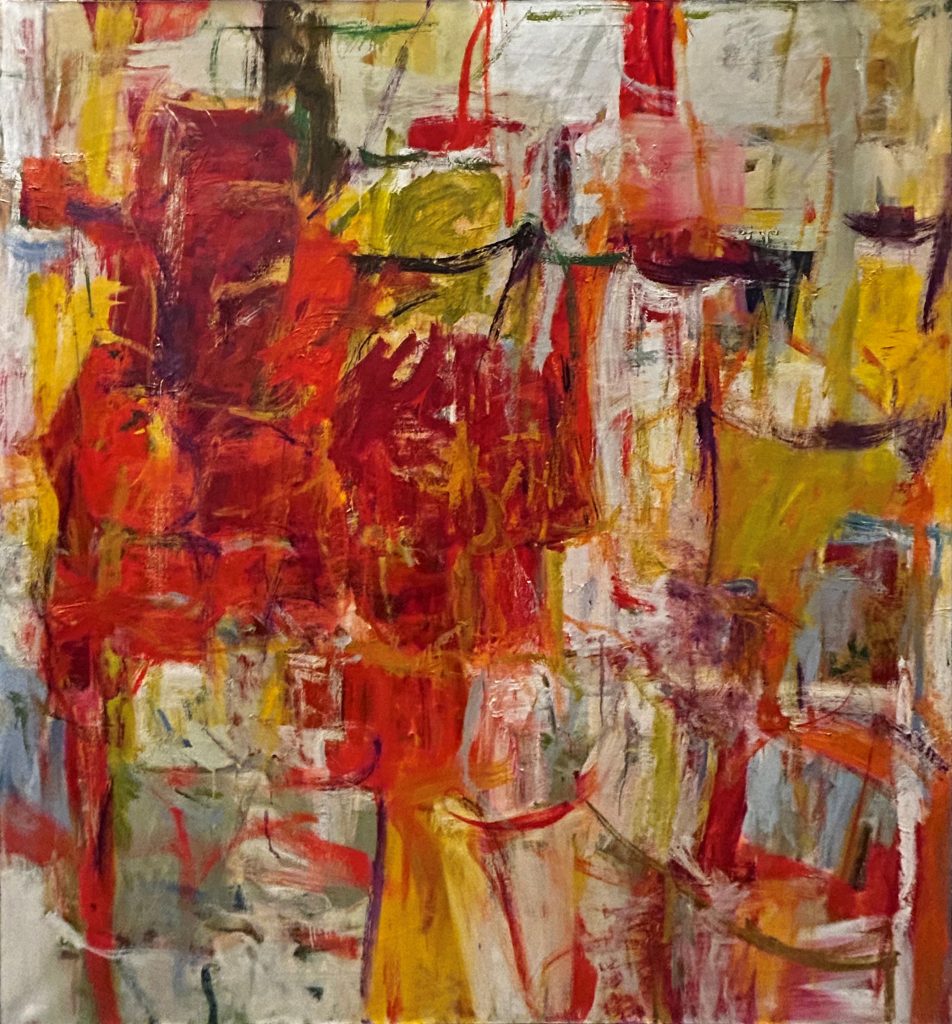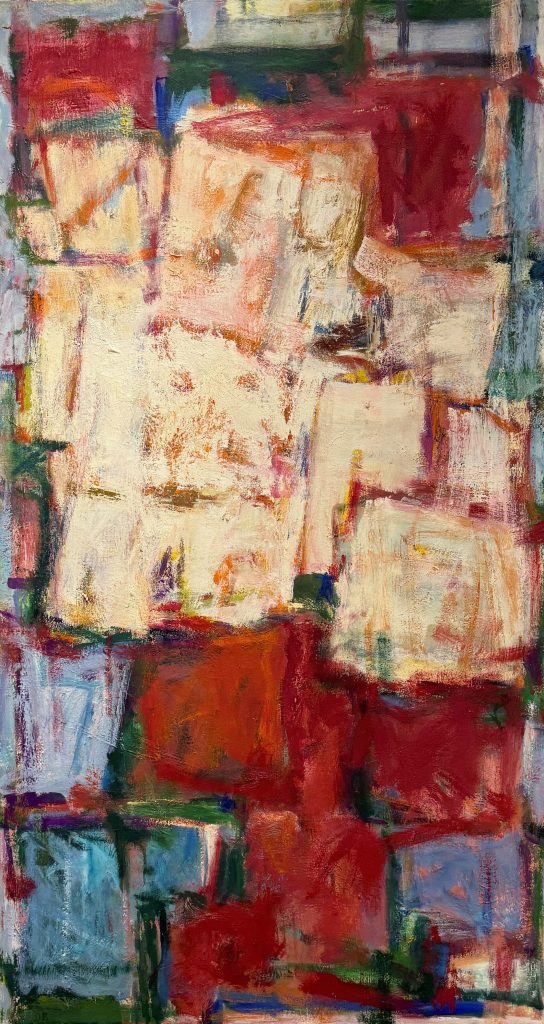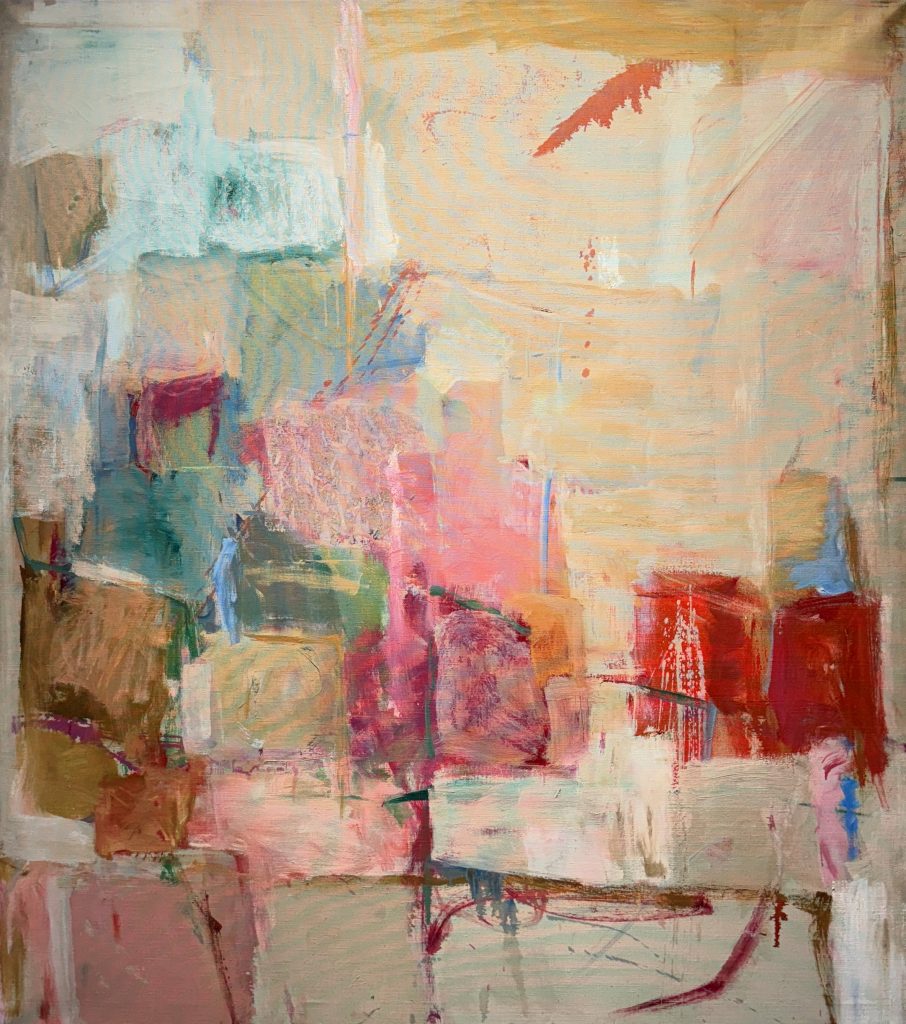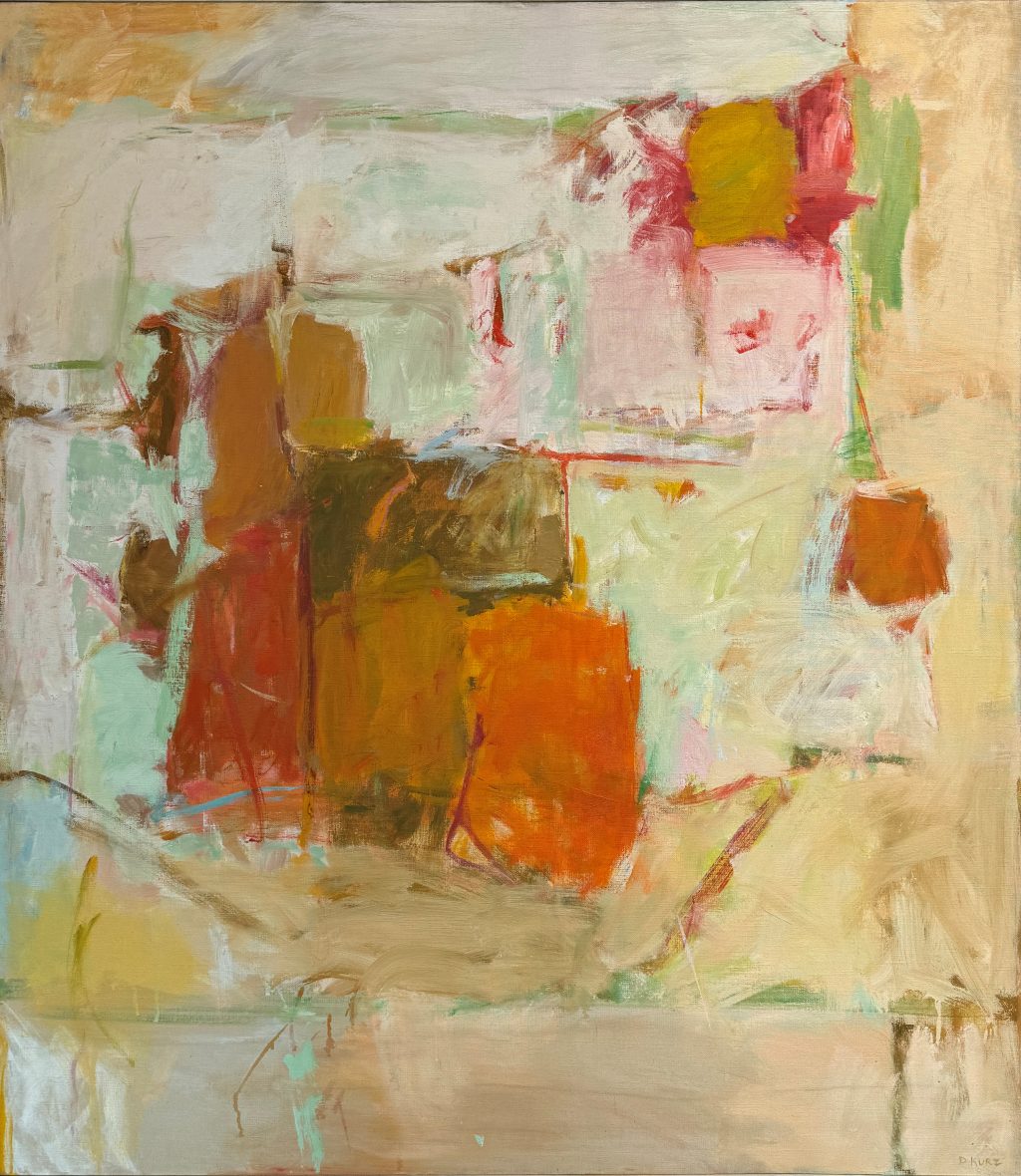Have you ever been immersed in your day, attention truly held by what’s in front of you, however momentary, when your awareness veered to something… ever so slight, but still entrancing?
I’m coming back to this draft while leaning against a painted metal column in a subway station. And this exact thing is probably something that we’d tend to dismiss as not welcoming at all if we encountered it out of context. But it’s providing me support in an actual, physical presence. The art from painter Diana Kurz that spurred these ponderings elaborates upon and enshrines these kinds of random but real moments of connection.
Maybe what visually or otherwise sensorily captures your brief contemplation is just a portion of the wall or the rest of the structure around you, if there is one, as it physically recollects the passage of time and what or who was once within it. Maybe it’s not even something strictly material or precise about the physical world around you, and is instead just a trick of perception, like surprising streaks or flashes of light that you see, or think you see, out of the rhetorical corner of your eye.
There’s a strong, formidable sense in moments like these that what you’re looking at does not exist outside of the instance during which you’re gazing upon it or in its presence… and yet, the light of it, an inkling of it, a memory of it… all of that does feel like it somehow continues, though not necessarily even with you. But you know there’s something lasting that’s sent into the future, or whatever will come next.
You feel transcendence in just being there to watch, to listen, to hear, and to otherwise take in what’s happening. Many of these moments are random and fleeting, and they may never be occupied by anyone else at all; or even you again. But they were still… there, and these moments and what they contained still bore weight and import because you were there. At least, that’s the feeling. The layered instances that Kurz’s art brings forward of the background becoming something of the foreground, becoming what’s seen most directly: these moments hold a feeling of fulfillment.
The clockable randomness of it all begins to heartily fill the space you can see and sense, even in the slightest of glances. The randomness specifically of what is sometimes taken for granted or ignored… things structural and activated by our own separate, individual presences, but distinct from it. You may be encountering the most sudden of interactions and occurrences that together connect only tangentially or by chance or the mere happenstance of proximity to each other, but you saw them.
In Kurz’s captivating artworks in her new exhibition at the gallery Lincoln Glenn in New York City, the sight — both brought forward from the past within the pieces themselves and made new in each moment when we’re looking at them — is the definition, and that definition is an enriching one. Aesthetically, these 20th Century works from the artist (who remains active) are sprawling and unpredictable, but they’re genuinely held — even pushed by some unseen and ensnaring force — together. Really: there is seriously so much happening, just materially speaking, on these absolutely jam-packed artworks, but I never felt out of place. It was the assurance of order without the actual presence of it, at least in the strictest sense.
Largely, her artworks in this show in particular feature layers upon layers of abstract, linearly oriented brushstrokes that did not offer an obvious, overarching narrative but still carried within themselves the clear impression that someone was here. And even in the absence of far-reaching realism, there remained that real connection within these artworks, as the particular color palettes that Kurz utilized in individual paintings tended to tell their own emotionally expansive stories.
I found, for instance, the gently pressing pink across a couple of the artworks a comfort and a clarion call. In place of but still occupying the same kind of role as the implied, spatial narrative you’d find in more realistic painting, there were instead impressions of emphatic and empathetic bonds. In the world of this artwork, you and your journey were still defined, but by this instead. The bond itself brought clarity.
Even fully cognizant of the insurmountable limits of the momentary, there were still feelings of hope and ambition and dreams in the art on display. It just felt like those hopes rested as much with the fulfillment of the present and temporary as they might with the more strictly delineated and sequential and orderly. These are paintings of taking it all in, of the welcoming opportunity of the present and what’s in front of you, which doesn’t ask or demand, instead simply… presenting itself.
Every corner, made more real — at least for us — by looking at it, becomes a site of creation.
Can you tell I really enjoyed these paintings?
Diana Kurz’s exhibition at Lincoln Glenn continues through April 26. Thank you to the gallery for helping set up this article. I really appreciate it.



Featured image: Diana Kurz, “#10 Big Orange and Turquoise,” 1962. Oil on canvas, 53 x 47 1/2 inches. Image courtesy of the artist and Lincoln Glenn.
You may also like
-
Dustin Hodges at 15 Orient in New York City: An Ensnaring Exhibition at an Exciting Gallery
-
Maren Hassinger at Susan Inglett Gallery in New York: Reviewing an Uplifting Art Exhibition
-
Enzo Shalom at Bortolami in New York City: Reviewing an Entrancing Exhibition of Paintings
-
“Ben Werther: Townworld” at Amanita in New York City: Reviewing a Richly Memorable Art Exhibition
-
Carolina Jiménez: “All That We Carry” at HESSE FLATOW in New York: Reviewing a Stirring Textile Art Show
